(1984–1985)
| Mermaid Saga | |||
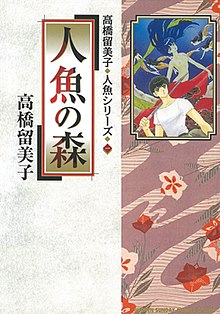 First shinsōban volume cover | |||
| 人魚シリーズ (Ningyo Shirīzu) | |||
|---|---|---|---|
| Genre | |||
| English magazine | |||
| Demographic | Shōnen | ||
| Original run | August 1984 – February 1994 | ||
| Volumes | 3 | ||
| |||
| 2 | December 19, 1992 [9] | 4-09-121855-5 | |
| |||
(1984–1985)
| Mermaid Saga | |||
 First shinsōban volume cover | |||
| 人魚シリーズ (Ningyo Shirīzu) | |||
|---|---|---|---|
| Genre | |||
| English magazine | |||
| Demographic | Shōnen | ||
| Original run | August 1984 – February 1994 | ||
| Volumes | 3 | ||
| |||
| 2 | December 19, 1992 [9] | 4-09-121855-5 | |
| |||
| No. | Title | Original release date | Japanese release date | |
|---|---|---|---|---|
| 1 | Mermaid Forest | November 1, 1994 [18] 978-1569310472 | October 18, 2003 [10] 4-09-121854-7 | |
| ||||
| 2 | Mermaid's Scar | February 5, 1996 [26] 978-1569310830 | November 18, 2003 [27] 4-09-127742-X | |
| 3 | Mermaid's Gaze | March 8, 1997 [19] 978-1569311950 | December 18, 2003 [11] 4-09-127743-8 | |
| No. | English release date | English ISBN | |
|---|---|---|---|
| 1 | July 14, 2004 [20] | 978-1591163367 | |
| |||
| 2 | September 21, 2004 [28] | 978-1591164845 | |
| |||
| 3 | November 30, 2004 [29] | 978-1591164838 | |
| |||
| 4 | December 22, 2004 [21] | 978-1591164821 | |
| |||
| No. | English release date | English ISBN | |
|---|---|---|---|
| 1 | November 17, 2020 [23] | 978-1-9747-1857-3 | |
| |||
| 2 | February 16, 2021 [24] | 978-1-9747-1859-7 | |
| |||
The first original video animation (OVA), Mermaid Forest, by studio Pastel, was released in Japan in August 1991. A subtitled Laserdisc and VHS tape were released in North America by US Manga Corps on March 3, 1993. [30] It was marketed as one of the Rumic World anime (along with Maris the Chojo , Fire Tripper , and Laughing Target ).
The second OVA, Mermaid's Scar, made by Madhouse, was released in Japan on VHS and Laserdisc on September 24, 1993. [31] Viz Media published a dubbed release on VHS on November 21, 1995. [32]
In 2003, the animation company Tokyo Movie Shinsha produced a 13-episode TV series based on Mermaid Saga as part of the Rumic Theater series and it was broadcast on TV Tokyo from October 4 to December 20, 2003. [33] All but the Eye of the Demon two-parter were animated. While closely following the story of the original manga (more so than the OVA versions), many of the violent aspects of the stories were toned down. Only eleven episodes were shown on Japanese TV, with the final two episodes (Mermaid's Scar) released direct to video, allegedly because this particular story was too violent for TV. It was released in North America by Geneon. [34]
| # | Title [35] [36] [37] [38] | Original airdate | |
|---|---|---|---|
| 1 | "Mermaid Does Not Smile" (人魚は笑わない) | October 4, 2003 | |
In a mountain village from Setouchi region, Mana has just turned fifteen. She is cared for and pampered by Baba, [e] an old woman who keeps her shackled in bed. The village is inhabited by identical old and young women who are all mermaids in human form. Meanwhile, Yuta, a young man arrives, looking for a mermaid. He is actually a 500 year old immortal human who became so after eating mermaid flesh. One of the women is chosen by the others to become a mermaid by entering the ocean and she is then sacrificed. Baba feeds her flesh to Mana to make her an immortal human whose flesh will rejuvenate the old women. Yuta learns of their plan and escapes with Mana after explaining her fate. The women try to stop Yuta and Mana from escaping, but they are caught in flooding sea water and revert to their mermaid forms. Baba, who is an immortal human, not a mermaid, decides to stay with the mermaids who are unable to take human form again. As Yuta leaves with Mana, he tells her that life as an immortal is not all bad, although he still hopes to become mortal again. | |||
| 2 | "Village of the Fighting Fish (Part I)" (闘魚の里(前編)) | October 11, 2003 | |
In a flashback, Yuta recalls meeting Rin, the daughter of the pirate chief of Toba island. Rin's father was gravely ill, so Rin led raiding parties on passing ships, demanding a tenth of their cargo as a toll and sparing the crews. Rin buried Yuta after his body washed ashore following a violent storm. However, Yuta revived and explained that he drowned while mermaid hunting on behalf of Isago, the wife of the Sakagami Island chief who were rivals to Toba Islanders. Isago convinced the chief to use his men to hunt mermaids and Yuta was hired with some other men in a nearby port for the hunt. For a time, Yuta lived and worked with the Toba islanders. One day, Isago saw Yuta and Rin in port. Surprised to see Yuta alive, Isago realized that he was immortal and believed he had access to mermaid flesh. Isago followed them back to Toba and stabbed Rin's father in an attempt to force Yuta into revealing the location of mermaid flesh and stop him from dying. In angry retaliation, Rin slew Isago. | |||
| 3 | "Village of the Fighting Fish (Part II)" (闘魚の里(後編)) | October 18, 2003 | |
Yuta's recollections of his past continue. Yuta and Rin took a fishing boat and captured a mermaid to save Rin's father. However, the Sakagami islanders followed them and after killing both the mermaid and Yuta, they took Rin to Sakagami. When Rin saw Isago there alive, she realized that Isago was immortal. Isago revealed that she has been pregnant for three years by her previous husband, whom the Sakagami islanders killed. She needed mermaid flesh so she could finally give birth. Meanwhile, Yuta revived and returned to save Rin. The chief and his men alternately fought Yuta and Rin while they ate the mermaid flesh. However, many were poisoned by the mermaid flesh and the survivors, including the chief, became Deformed Ones. Isago told the chief that she too was a mermaid and leaped off a cliff into the ocean. Yuta and Rin thought Isago did so in desperation, but Isago changed into her mermaid form and swam away, trailed by two smaller forms. On Toba, Rin's father recovers from his wound without eating mermaid flesh. Back in the present, Mana asks Yuta how far does the ocean go. | |||
| 4 | "Mermaid Forest (Part I)" (人魚の森(前編)) | October 25, 2003 | |
Mana is accidentally killed by a truck when she runs onto the road. Old Doctor Shiina tells the police and Yuta that she survived and wandered away, however he takes her corpse to the house of an old woman named Sawa who lives with a young woman called Towa. Shiina prepares to remove Mana's forearm to replace the deformed arm of Towa, but as he begins, Mana revives. Yuta realizes that Shiina lied and tracks him to Sawa's house in Mermaid's Forest, where local legend says a mermaid is buried. Towa commands a Deformed dog to attack and kill Yuta. When Yuta revives, he finds himself chained in a cell in the basement. Towa kills Mana, planning to have Shiina transplant her head onto Mana's body. Meanwhile, Sawa frees Yuta and reveals that she and Towa are identical twins, but when they were young, Sawa gave Towa medicine made of mermaid blood to save her from a terminal illness. The medicine made her ageless, but turned her hand into a Deformed claw and her hair white. Rather than admit his daughter was partially Deformed, their father had told everyone that Towa had died and confined her to the cell in the basement until his death. | |||
| 5 | "Mermaid Forest (Part II)" (人魚の森(後編)) | November 1, 2003 | |
To save Mana's life, Sawa takes Towa to the mermaid's tomb. Yuta follows and warns Towa that eating mermaid flesh may completely transform her into a Deformed One. Towa says immortality or transformation makes no difference, and tries to force Sawa to eat a piece of mermaid flesh. She explains that when they were young, Sawa desired immortality, but was too afraid to try it herself and experimented on Towa, her identical twin. Towa developed a Deformed hand and remained eternally youthful instead. While Towa was forced to live in confinement, Sawa lived a full life, marrying and having a child. Towa tries to make Sawa eat the mermaid flesh, to become immortal as an old woman or a monster, however Sawa dies of a heart attack, denying Towa her revenge. Towa instructs the others to burn the tomb, the house, and everything in them, including herself. As they watch the fire burn, Shiina reveals that he had tried to convince Towa to elope with him when he was young, but Towa refused, remaining to exact revenge on her sister. Later, Mana reassures Yuta that if they were separated, she would eternally search for him. | |||
| 6 | "The End of the Dream" (夢の終わり) | November 8, 2003 | |
Yuta and Mana fall off a cliff while chasing a butterfly and both die. A heavily bandaged man, called Big Eyes by nearby villagers, carries Mana to his cave. An old hunter from the village finds Yuta, but Yuta revives during his burial rites. Big Eyes tells Mana that 40 years earlier he lived in a fishing village and ate mermaid flesh. He blacked out, and upon regaining his senses, discovered everyone in his village had been killed. He ran into the mountains and lived alone ever since. Yuta and the hunter find Big Eyes who flees deep into the cave with Mana. There, Mana stumbles upon the skeletons of villagers that Big Eyes has eaten and Big Eyes explains that he still blacks out. The hunter shoots Big Eyes who goes berserk and runs away. Yuta catches and kills Big Eyes. Later, Mana ponders that there are all sorts of Deformed Ones, all sorts of mermaids, and all sorts of Yutas. | |||
| 7 | "Bone Princess" (舎利姫) | November 15, 2003 | |
While fishing with Mana, Yuta has a flashback to 1600, the first year of the Tokugawa shogunate, when he was 120 years old. He recalls an apparently 12-year-old immortal girl called Natsume who works with an old man, whom she calls Pa, who purports to sell mermaid flesh, but it is only fish. An itinerant monk attempts to kill Natsume and cuts off her left arm. Yuta rescues Natsume and carries her back to Pa, who reattaches her severed arm. Later, the monk tells Yuta that after Natsume died, he used a piece of mermaid liver to resurrect her for Pa. The monk has decided to end Natsume's existence because of her need to eat fresh liver to survive, but Pa escapes with her. Yuta doubts destroying Natsume is the right thing to do and offers to take her with him, but the monk attacks Natsume and removes the mermaid liver. When Pa sees what the monk has done, he picks her up and jumps off a cliff. Yuta finds Natsume still alive at the base of the cliff, but she dies in his arms and turns back into bones. | |||
| 8 | "The Last Face (Part I)" (最後の顔(前編)) | November 29, 2003 | |
Yuta and Mana meet Nanao, a 10-year-old boy carrying a cinerary box who lives with his mother and grandmother. Nanao's grandmother arranges for him to be kidnapped but he escapes and uses family medicine to heal his wounds from the escape. Yuta and Mana take Nanao home, where Nanao's grandmother shows Yuta and Mana a photograph of Nanao's mother, who does not appear be the woman Nanao calls Mother. Alone, Nanao's mother opens the cinerary box, revealing the skin of a scarred woman's face. The next day Mana and Nanao see Nanao's mother enter the cellar, but later the woman from the photo emerges with a bandage on one side of her face. In the cellar, Mana discovers surgical instruments and the skin from the face of Nanao's mother. Meanwhile, Yuta follows Nanao's kidnapper who meets the woman with the bandage covering a scar. Yuta overhears her call him Nanao and him call her Mother but she pushes him over a cliff. The older Nanao explains to Yuta that, 25 years ago, his mother ate mermaid flesh and then eight years ago, his mother, who had not aged in 25 years, kidnapped his son who is also called Nanao. | |||
| 9 | "The Last Face (Part II)" (最後の顔(後編)) | December 6, 2003 | |
Mana discovers the face of Nanao's mother in the cinerary box in the basement. She is suddenly attacked by the scarred woman and manages to escape, but is wounded by an axe. The woman then painfully removes her own face and attaches the one from the box and reappears as Nanao's mother. Yuta concludes that she has eaten mermaid flesh, especially after Mana opens the box and sees the scarred face inside. Yuta realizes that she is the same woman. The woman explains that 25 years earlier, her son Nanao left her to live with his father so she tried to feed him mermaid flesh to stop him ageing, but his grandmother took him to his father. When Nanao had a son, she abducted the boy and brought him up as her own son. She used the face of a dead woman to hide her face which had become scarred from the poison within the mermaid flesh. Desperately she grabs Nanao and tries to force him to eat the flesh, but Yuta stops her. Realizing that she has lost, she leaves, and later the body of a woman is found in a burned-out storehouse. | |||
| 10 | "Promised Tomorrow (Part I)" (約束の明日(前編)) | December 13, 2003 | |
Yuta takes Mana to visit the grave of the Kogure family grave where 60 years earlier, he knew a kind girl named Nae. Mana then encounters a girl being chases by a man with dogs and intervenes to save her. The girl kills the man with a rock, but Mana is blamed and his associates kill and bury her. Yuta searches for Mana and encounters Sokichi, an old man who was Nae's servant as a boy who says that everyone believed that Nae had left with Yuta, abandoning her fiancee Eijiro. Meanwhile, Mana revives and discovers that Eijiro has kept Nae confined on his estate, looking perpetually young, but without any knowledge of her past. Meanwhile, Yuta is captured by Eijiro's men and knocked unconscious and he calls how Nae told him how a travelling nun left mermaid ashes which Nae used to create the Red Valley, a field of perennially blooming red flowers. When Yuta awakes, Eijiro tells him that he found Nae's body in the Red Valley, and Yuta tells him another version of the story of mermaid ashes in which a villager killed a nun to steal the ashes, but the nun came back to life and killed many of the villagers. Nae kills some of Eijiro's men and leaves with Mana following her. Eijiro orders his men to recapture Nae unharmed but to decapitate Yuta and Mana. | |||
| 11 | "Promised Tomorrow (Part II)" (約束の明日(後編)) | December 20, 2003 | |
Sokichi helps Yuta escape, and they drive to the Red Valley. He reminds Yuta of a signal of arranged stones Yuta devised with Nae to meet in the Red Valley on the day he was to depart. Yuta denies that he gave the signal and suspects that someone else did. Eijiro and his men catch up with two girls and stabs Nae with his cane sword. He admits that he set the stone signal to test Nae's loyalty to him. When she arrived to leave with Yuta, Eijiro killed her in a jealous rage. Eijiro had planned to revive Nae with the mermaid ashes, but could not find them. He explains that for decades he searched for the ashes, and after finally finding them, he used them to revive Nae's still pristine corpse laying in the Red Valley. Mortally wounded, Nae staggers into in the Red Valley and remembers that Eijiro killed her there. Meanwhile, Yuta and Sokichi have escaped Eijiro's men and Yuta embraces Nae. She finally recalls the events of the past, but she dies in his arms. As Yuta and Mana leave, Yuta asks Mana if she is jealous, but Mana cheekily asks Yuta if jealousy is some kind of dessert. [f] | |||
| 12 | "Mermaid's Scar (Part I)" (人魚の傷(前編)) | May 19, 2004 (DVD Only) | |
Yuta and Mana encountera boy called Masato who is traveling from Tokyo to live with his mother. One night two years later, Masato stabs his mother in the chest, then cleans up the murder scene. However, the next morning when the housekeeper Yukie arrives, Masato's mother is alive again. At a nearby seaside a nearby construction site where Yuta and Mana are working, Yuta learns about a mysterious body that washed ashore and how that after Masato's mother died in a boat accident, she came back to life. Later, Masato's mother notices that her chest wound is not healing and attacks Masato demanding mermaid flesh, but the boy is saved by Yuta. Masato gives Yukie a piece of mermaid flesh, hoping to make her immortal, but she becomes a Deformed instead and attacks Masato and his mother. Yuta arrives in time to kill the monster, but then realizes that it was Yukie. Mana escapes to safety with Masato who leads her to his hiding place. Meanwhile, Masato's mother tells Yuta that the immortal Masato gave her mermaid flesh after a Pacific War bombing raid, making her essentially his immortal captive mother. She ran away, but he found her again from after news of the boat accident. She finally dies from wounds inflicted by the Deformed. In his hideout, Masato suddenly tasers Mana and prepares to kill Yuta. | |||
| 13 | "Mermaid's Scar (Part II)" (人魚の傷(後編)) | May 19, 2004 (DVD Only) | |
Masato reveals to his captive Mana that he is going to kill Yuta. Masato returns to the house, where he tricks Yuta into being caught in a booby trap of piano wire which cuts deeply into his neck. Masato explains that he is over 800 years old and recounts how he used mermaid flesh to transform many women into becoming long-lived mothers to him, but they all eventually died. Mana escapes her bonds and arrives to save Yuta just as Masato is in the process of beheading him with an ax. Masato shoots Mana, who as he dies, promises to kill Masato if he shoots Yuta, however she collapses first. Masato sets fire to the house to kill Mana, however, she awakes in time to drag Yuta's corpse from the fire. Masato drives off in his mother's car, but loses control. As a head-on collision with a truck is imminent, he resolves to find his next companion after he comes back to life. Yuta eventually revives and finds Mana crying. Later, he ask Mana why she cried and she replies that it was out of happiness. | |||
Mermaid Saga was awarded the 20th Seiun Award for the Best Comic category in 1989. [39]

Ranma ½ is a Japanese manga series written and illustrated by Rumiko Takahashi. It was serialized in Weekly Shōnen Sunday from August 1987 to March 1996, with the chapters collected in 38 tankōbon volumes by Shogakukan. The story revolves around a teenager named Ranma Saotome who has trained in martial arts since early childhood. As a result of an accident during a training journey, he is cursed to become a girl when exposed to cold water, while hot water changes him back into a boy. Throughout the series Ranma seeks out a way to rid himself of his curse, while his friends, enemies, and many fiancées constantly hinder and interfere.
Rumiko Takahashi is a Japanese manga artist. With a career of several commercially successful works, beginning with Urusei Yatsura in 1978, she is one of Japan's best-known and wealthiest manga artists. Her works are known worldwide, where they have been translated into a variety of languages, with over 230 million copies in circulation; making Takahashi one of the best-selling authors of all time. She has won the Shogakukan Manga Award twice, once in 1980 for Urusei Yatsura and again in 2001 for Inuyasha, and the Seiun Award twice, once in 1987 for Urusei Yatsura and again in 1989 for Mermaid Saga. She also received the Grand Prix de la ville d'Angoulême in 2019, becoming the second woman and second Japanese to win the prize. In 2020, the Japanese government awarded Takahashi the Medal with Purple Ribbon for her contributions to the arts.

Maison Ikkoku is a Japanese manga series written and illustrated by Rumiko Takahashi. It was serialized in Shogakukan's seinen manga magazine Big Comic Spirits from November 1980 to April 1987, with the chapters collected into 15 tankōbon volumes. Maison Ikkoku is a romantic comedy involving a group of eccentric people who live in a boarding house in 1980s Tokyo. The story focuses primarily on the gradually developing relationships between Yusaku Godai, a poor student down on his luck, and Kyoko Otonashi, a young, recently widowed boarding house manager.

Inuyasha is a Japanese manga series written and illustrated by Rumiko Takahashi. It was serialized in Shogakukan's shōnen manga magazine Weekly Shōnen Sunday from November 1996 to June 2008, with its chapters collected in 56 tankōbon volumes. The series begins with Kagome Higurashi, a fifteen-year-old middle school girl from modern-day Tokyo who is transported to the Sengoku period after falling into a well in her family shrine, where she meets the half-dog demon, half-human Inuyasha. After the sacred Shikon Jewel re-emerges from deep inside Kagome's body, she inadvertently shatters it into dozens of fragments that scatter across Japan. Inuyasha and Kagome set out to recover Jewel's fragments, and through their quest, they are joined by the lecherous monk Miroku, the demon slayer Sango, and the fox demon Shippō. Together, they journey to restore the Shikon Jewel before it falls into the hands of the evil half-demon Naraku.

Urusei Yatsura (うる星やつら) is a Japanese manga series written and illustrated by Rumiko Takahashi. It was serialized in Shogakukan's Weekly Shōnen Sunday from September 1978 to February 1987. Its 366 individual chapters were collected in 34 tankōbon volumes. It tells the story of Ataru Moroboshi, and the alien Lum, who believes she is Ataru's wife after he accidentally proposes to her. The series makes heavy use of Japanese mythology, culture, and puns. It was adapted into two anime television series that aired on Fuji TV affiliates.
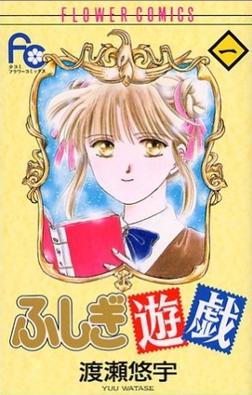
Fushigi Yûgi, also known as Fushigi Yûgi: The Mysterious Play or Curious Play, is a Japanese manga series written and illustrated by Yuu Watase. It tells the story of two teenaged girls, Miaka and Yui, who are pulled into The Universe of the Four Gods, a mysterious book at the National Diet Library. It is based on the four mythological creatures of China. Shogakukan serialized Fushigi Yûgi in Shōjo Comic from December 1991 to May 1996 and later compiled the manga into eighteen tankōbon volumes.

All Purpose Cultural Cat Girl Nuku Nuku is a Japanese manga written and illustrated by Yuzo Takada. It was serialized in Weekly Manga Action for only three issues in 1991, with the three published stories later compiled in a single volume collection in December 1997. The story begins when genius inventor Kyūsaku Natsume transplants the brain of a cat found by his son Ryūnosuke on Christmas Eve, into a schoolgirl android that he created and subsequently stole from his former employer, Mishima Heavy Industries. The result, Nuku Nuku, is a nekomusume or cat girl. The manga was licensed by ADV Manga and published as a single volume on August 24, 2004.

Tokyo Babylon (東京BABYLON), also known as Tokyo Babylon: A Save Tokyo City Story, is a Japanese manga series written and illustrated by Clamp. It follows Subaru Sumeragi, the head of the Sumeragi clan, and his sister Hokuto, as they work to protect Tokyo from a myriad of supernatural perils while living with a man named Seishiro Sakurazuka. Shinshokan serialized it in South and Wings magazines from 1990 to 1993, and was collected in 7 tankōbon volumes.

Super Dimensional Fortress Macross II: Lovers Again is a six episode OVA in the Macross franchise. It was the first installment of Macross to feature a new cast of characters. Macross II was produced by Big West, with no involvement from the original series creators from Studio Nue or the original series animators from Tatsunoko Production.
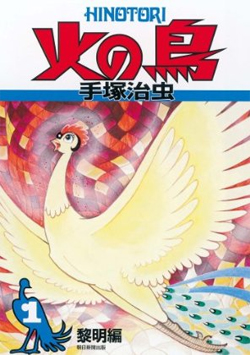
Phoenix is an unfinished manga series written and illustrated by Osamu Tezuka. Tezuka considered Phoenix his "life's work"; it consists of 12 parts, each of which tells a separate, self-contained story and takes place in a different era. The plots go back and forth from the remote future to prehistoric times. The story was never completed, having been cut short by Tezuka's death in 1989.

One-pound Gospel is a Japanese manga series written and illustrated by Rumiko Takahashi. It was serialized in Shogakukan's seinen manga magazine Weekly Young Sunday from July 1987 to December 2006, with its chapters collected into four tankōbon volumes. The story is a fusion of the sports and romantic comedy genres.
Rachel Thorn is a cultural anthropologist and a faculty member at the Kyoto Seika University's Faculty of Global Culture in Japan.

Rumiko Takahashi's Urusei Yatsura, a Japanese anime and manga series, has six films and ten OVA releases. During the television run of the series, four theatrical films were produced. Urusei Yatsura: Only You was directed by Mamoru Oshii and began showing in Japanese cinemas on February 11, 1983. Urusei Yatsura 2: Beautiful Dreamer was also directed by Mamoru Oshii and was released on February 11, 1984. Urusei Yatsura 3: Remember My Love was directed by Kazuo Yamazaki and released on January 26, 1985. Urusei Yatsura 4: Lum the Forever was directed again by Kazuo Yamazaki and released on February 22, 1986.
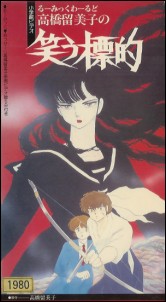
Laughing Target is a Japanese manga by Rumiko Takahashi published in February 1983 issue of Shōnen Sunday Zōkan. The manga was later compiled in Rumic World books, which are available in English from Viz Media. It was adapted into an anime OVA released in 1987. A subtitled VHS release was published in North America by US Manga Corps on April 7, 1993. An English dub was produced by Manga UK.

Maris the Chojo, originally titled Supergal in U.S. markets, is a one shot manga story by Rumiko Takahashi. It ran in the October 1980 special edition of Shōnen Sunday and was later made into an anime OVA. The manga was later compiled in the Rumic World collection, which is available in English from Viz Media.

Winry Rockbell is a fictional character from Hiromu Arakawa's Fullmetal Alchemist manga series and its adaptations. Winry is a teenage mechanic who often spends time with the central characters, brothers Edward and Alphonse Elric, who are childhood friends of hers. Specializing in mechanical repair, specifically prostheses called automail, Winry services Ed's replacement arm and leg. Originally meant to be introduced in the series' first chapters due to its lack of female characters, some of Winry's traits are based on Arakawa's own life. In the first anime adaptation, Fullmetal Alchemist, Winry is voiced by Megumi Toyoguchi in Japanese and by Caitlin Glass in the English version. In the second anime adaptation, Fullmetal Alchemist: Brotherhood, she is voiced by Megumi Takamoto in Japanese, with Glass reprising the role in English.
Magical Emi, the Magic Star is a magical girl anime series by Studio Pierrot. It was simultaneously released as a manga by Kiyoko Arai. The third magical girl series created by Studio Pierrot, Magical Emi also appears in two feature-length OVAs, as well as the Adesugata Mahou no Sannin Musume and Majokko Club Yoningumi A-Kukan Kara no Alien X OVAs.

Fire Tripper is a Japanese manga by Rumiko Takahashi published in August 1983 issue of Shōnen Sunday Zōkan. The manga was later compiled in Rumic World books, which are available in English from Viz Media. It was adapted into an anime OVA, but was also released in theaters in double bill with Shin'ichi Masaki's OVA The Humanoid. In North America, this was released on VHS by Central Park Media under the Rumik World series.
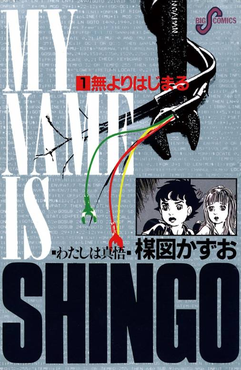
My Name Is Shingo is a Japanese science fiction manga by Kazuo Umezu. It was serialized in Big Comic Spirits between 1982 and 1986, with its chapters collected in 10 tankōbon volumes. While best known for his horror manga, Umezu desired to minimize the horror and dedicate Shingo to exploring concepts of god, consciousness, and the metaphysical.
Takahashi's uses some of her best talents to create a fantasy world with horror and mystique and it presents it with a character, Yuta, that is really easy to relate to.